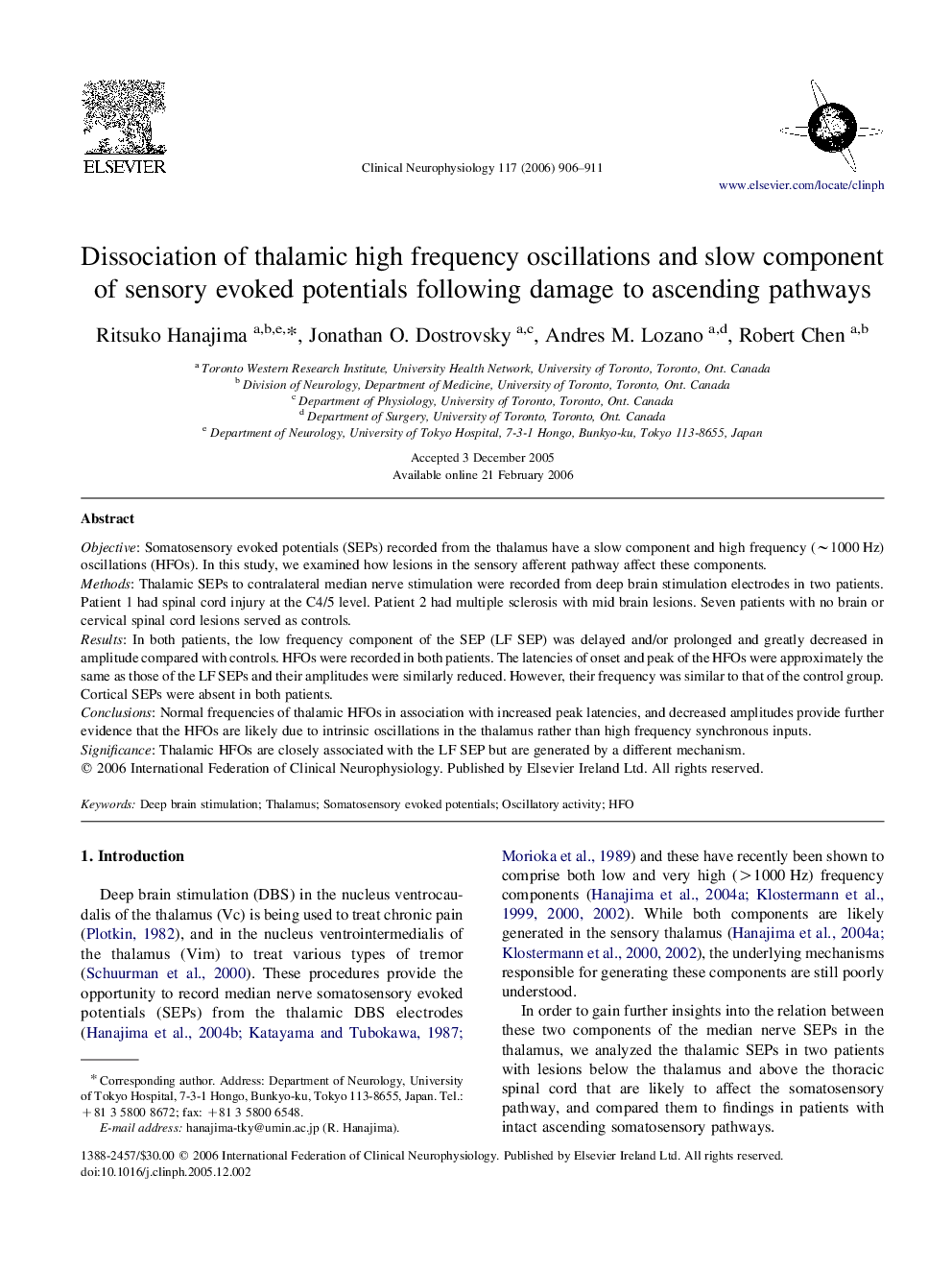| کد مقاله | کد نشریه | سال انتشار | مقاله انگلیسی | نسخه تمام متن |
|---|---|---|---|---|
| 3048250 | 1185076 | 2006 | 6 صفحه PDF | دانلود رایگان |

ObjectiveSomatosensory evoked potentials (SEPs) recorded from the thalamus have a slow component and high frequency (∼1000 Hz) oscillations (HFOs). In this study, we examined how lesions in the sensory afferent pathway affect these components.MethodsThalamic SEPs to contralateral median nerve stimulation were recorded from deep brain stimulation electrodes in two patients. Patient 1 had spinal cord injury at the C4/5 level. Patient 2 had multiple sclerosis with mid brain lesions. Seven patients with no brain or cervical spinal cord lesions served as controls.ResultsIn both patients, the low frequency component of the SEP (LF SEP) was delayed and/or prolonged and greatly decreased in amplitude compared with controls. HFOs were recorded in both patients. The latencies of onset and peak of the HFOs were approximately the same as those of the LF SEPs and their amplitudes were similarly reduced. However, their frequency was similar to that of the control group. Cortical SEPs were absent in both patients.ConclusionsNormal frequencies of thalamic HFOs in association with increased peak latencies, and decreased amplitudes provide further evidence that the HFOs are likely due to intrinsic oscillations in the thalamus rather than high frequency synchronous inputs.SignificanceThalamic HFOs are closely associated with the LF SEP but are generated by a different mechanism.
Journal: Clinical Neurophysiology - Volume 117, Issue 4, April 2006, Pages 906–911